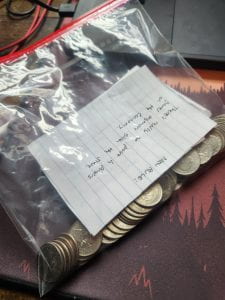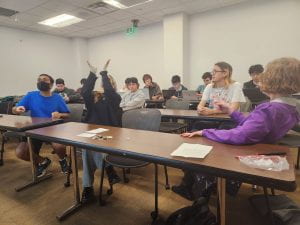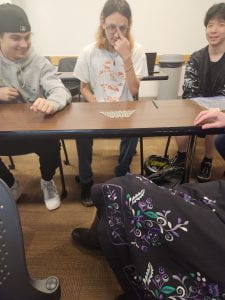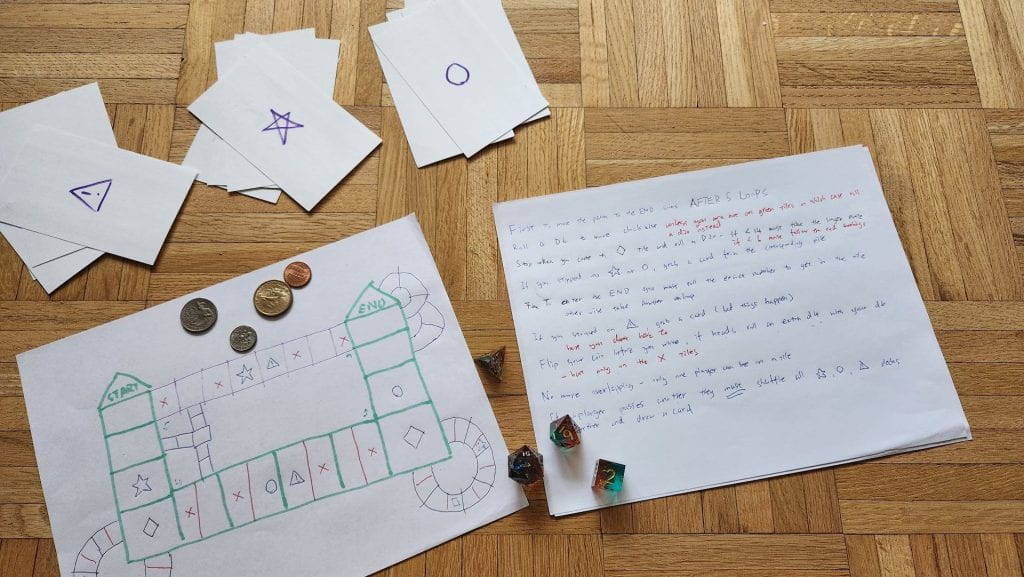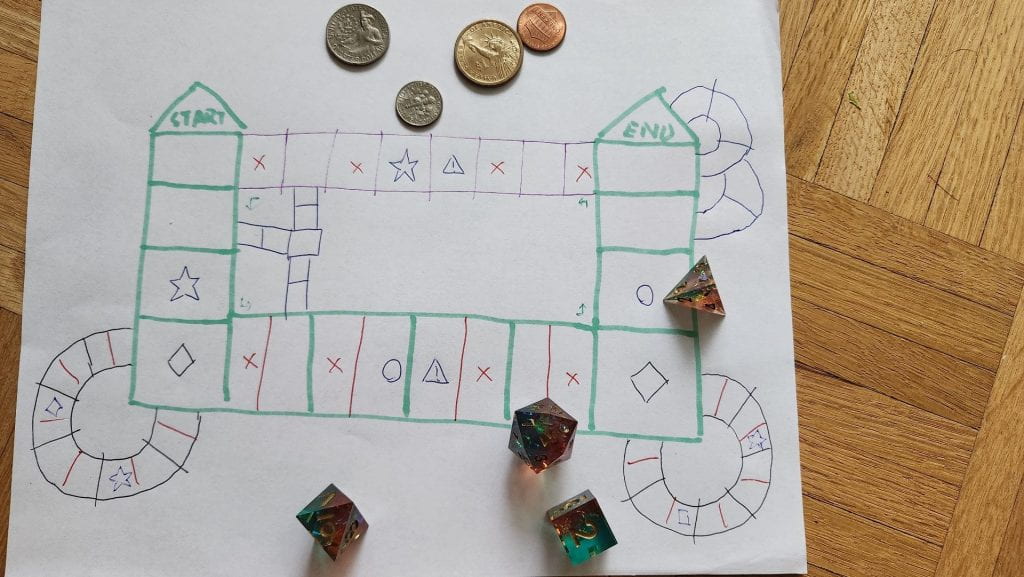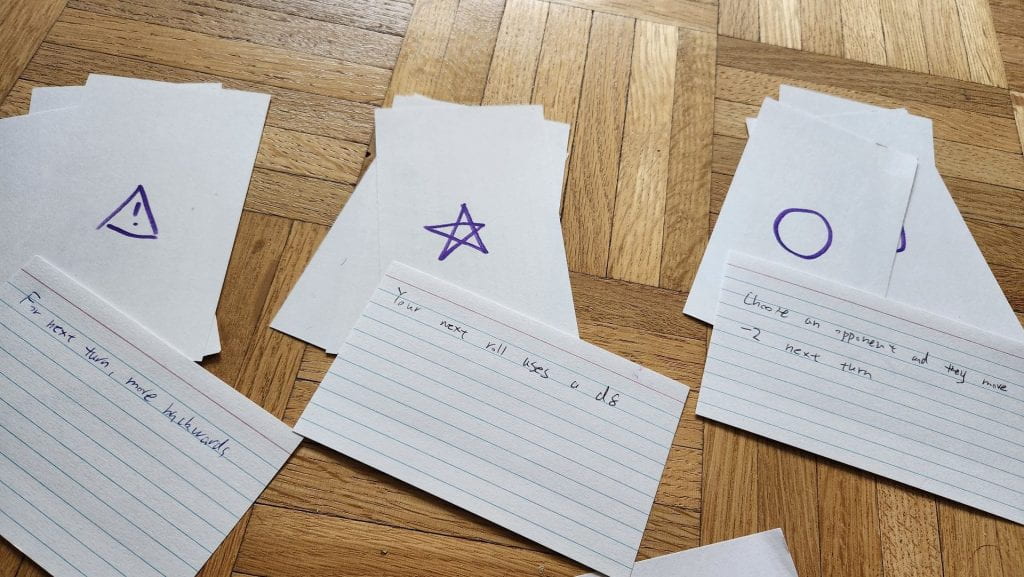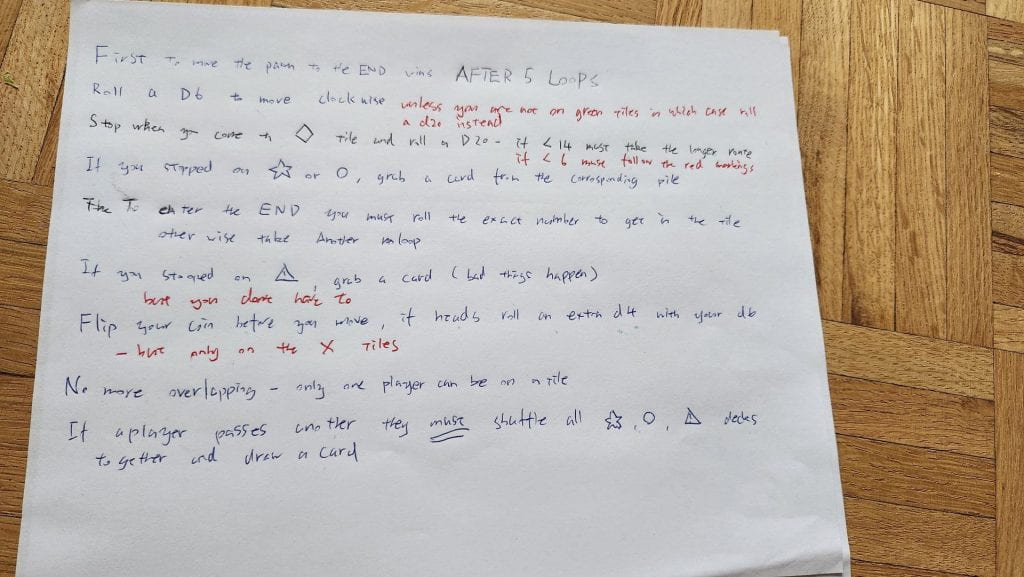Overview
This work is called “Biography.” This work is a commentary on the representation of people on social media.
Rules/Setup
Necessary Materials: Two pieces of lines paper, a writing utensil, and a 6-sided die.
- Number the first three lines of a lined paper as “1,” “2,” and “3.” Repeat this process five more times down the paper.
- Beside each group of three lines, write the number of the year it was 7 years ago. In the first sentence, express your feelings from that year. In the second, write about a regrettable action from that time. In the third, share a strong opinion you held then. Avoid specific dates.
- Repeat step 2 for each preceding year up to 2 years ago.
- On a new piece of paper, craft a 5-sentence paragraph about the most recent past year of your life. Separate each sentence on different lines, leaving a blank line after each.
- Roll a 6-sided die twice to randomly select a sentence from the first paper. The first roll determines the trio of lines, and the second roll selects the specific line (1-2 for the first line, 3-4 for the second, and 5-6 for the third).
- Place the chosen sentence into the first blank row of your 5-sentence paragraph about the most recent past year.
- Repeat steps 5 and 6 until all blank rows are filled in the paragraph.
- Share the completed paragraph as a caption accompanying a self-portrait on social media.
Artist Statement
“Biography” stands as a poignant reflection on the intricacies of self-representation in an era dominated by social media. It is heavily influenced by the in-class activities we did where the whole class wrote various statements on a piece of paper to create one single ridiculous series of statements.
In today’s digital landscape, social media affords instantaneous glimpses into various facets of individuals’ lives, often presented in a non-chronological and fragmented manner. This phenomenon shapes perceptions and constructs perceptions of people that can be heavily influenced by past events, chaining individuals to outdated versions of themselves. “Biography” seeks to confront and unravel this phenomenon by challenging participants to reflect on their past experiences and beliefs and consider how it relates to their current self.
Specifically, the rules and setup of “Biography” are designed to disrupt the linear progression of traditional autobiographical narratives, mirroring the disjointed nature of social media timelines. By anchoring each section of the narrative to a specific period in the past, the work compels participants to confront the disjunctions between past and present. Through the random selection and integration of sentences into a cohesive narrative, this works aims to blur temporal boundaries, inviting viewers to reassess the fluidity of personal identity and the way they view other people.

